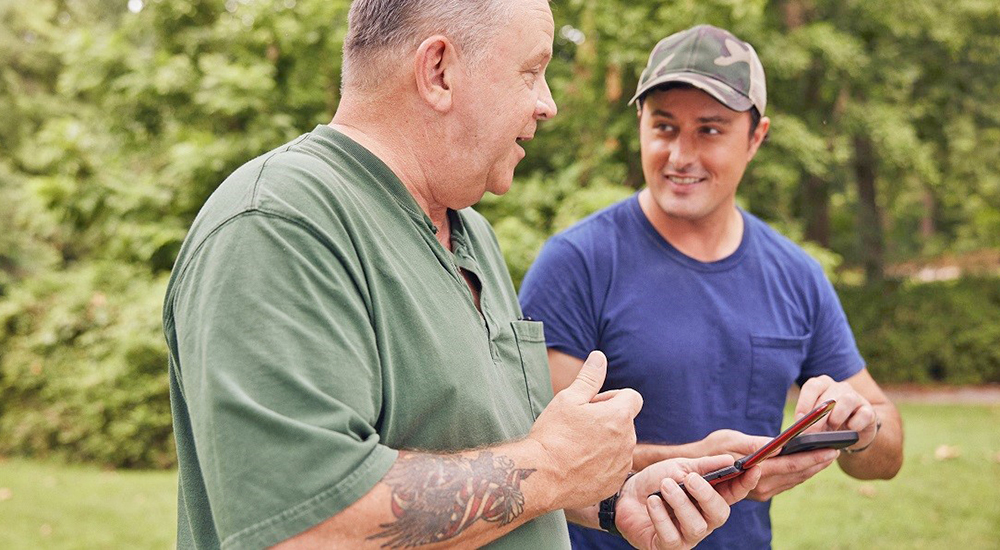This May marked 20 years since the launch of the VA Telehealth Services program office. Over the past two decades, millions of Veterans have used telehealth to access VA health care and for many different reasons.
Rosie Glenn, a Navy Veteran living in Minnesota, said video visits help her save precious time in her busy days. She is the primary caregiver and home-school teacher for her son who has a disability.
“It’s awesome because now I have more free time in my day. I don’t know why I didn’t start using telehealth sooner,” she said.
Air Force Veteran Jackson Gerrard used telehealth to beat back a rare form of blood cancer. There are few specialists near Gerrard’s West Virginia home who can treat him, so he meets over video with his North Carolina-based VA oncologist, Dr. Thomas Rodgers.
“Getting a diagnosis like cancer and then being told you have to get in your car, take your family and drive 300 miles, it’s just impossible,” Rodgers said. “To meet Veterans where they are for their care is one of the amazing things about telehealth.”
“Telehealth saved my life.”
Michael Novielli credits VA telehealth with saving his life. The Marine Veteran and New York native has used telehealth for almost a decade to monitor his blood pressure.
When he developed a dangerous case of pneumonia, it was his telehealth nurse, Marjorie Rogers, who first noticed the symptoms and urged him to go to the emergency room.
“Marjorie saved my life. If I wasn’t on the telehealth, I would have stayed home with the pneumonia and who knows what would have happened,” he said.
VA’s telehealth program was started by then-VA Under Secretary Robert Roswell in 2003. A successful pilot of the Home Telehealth program in VISN 8 helped lay the foundation for the national program and, ultimately, the expansion of VA Telehealth Services, to include multiple telehealth modalities.
In fiscal 2022, more than 2.3 million Veterans took part in over 11 million episodes of care through telehealth.
The use of these services surged at the height of the COVID-19 pandemic. Over the past three years, the number of video visits to Veterans’ homes has increased by 3,000%.
One of the largest providers of telehealth in the world
Rita Kobb, a nurse practitioner and VA Telehealth Training and Outreach lead, was one of the national telehealth office’s original employees.
“We’ve grown to be the No. 1 provider of telehealth in the United States and one of the largest providers in the world. People look to us from outside the agency as an expert and as somebody to model their programs after,” she said.
So, what’s next for VA telehealth? Dr. Kevin Galpin, executive director of VA Telehealth Services, says the VA telehealth program will continue striving to connect Veterans to VA’s trusted care, anytime and anywhere.
“Our top priority is providing Veterans with VA’s world class health care when and where they need us. That means delivering health care without walls and seamlessly blending the best of virtual and in-person care into a great and therapeutic health care experience for our nations Veterans,” Galpin said.
Learn more by visiting the Telehealth website.
Topics in this story
More Stories
The Veterans self-check assessment takes about 10 minutes to complete and has resources that can help if stress and depression are affecting you.
Nutrition plays an important role in our overall health. Telehealth resources can help you set and achieve your healthy eating goals.
Veterans learn to combine mindfulness with the challenge of climbing.






It only works if the provider is on the same (page) as you. I can’t hardly get it to work on my iPhone
Thank you for the update
Daniel K Pimentel